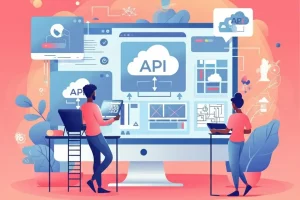APIs (Application Programming Interfaces) are the backbone of modern software, enabling seamless communication between different services. However, if you've ever checked your cloud bill, you may have noticed that API calls can be surprisingly expensive. Why is that? Let’s break down the key reasons behind the high costs of API calls.
1. Infrastructure and Scalability Costs
APIs require robust infrastructure to handle millions (or billions) of requests. Companies must invest in:
-
Servers & Compute Power – Processing each API request consumes CPU, memory, and network resources.
-
Load Balancers – To distribute traffic efficiently and prevent downtime.
-
Caching & Databases – Fast response times often require expensive in-memory databases like Redis.
As usage scales, cloud providers charge more for additional bandwidth, compute time, and storage, driving up costs.
2. Third-Party API Fees
Many APIs are provided by third-party services (e.g., Stripe for payments, Twilio for SMS, OpenAI for AI models). These companies price their APIs based on:
-
Value Provided – If an API delivers critical functionality (e.g., real-time stock prices, fraud detection), providers charge a premium.
-
Usage Tiers – Higher request volumes often come with escalating costs.
-
Enterprise Features – Support, SLAs (Service Level Agreements), and dedicated infrastructure add to the price.
3. Data Transfer & Bandwidth Costs
Every API call involves data transfer, and cloud providers charge for:
-
Egress Traffic – Sending data out of a cloud network (e.g., AWS, Google Cloud) incurs fees.
-
High-Volume Requests – APIs returning large payloads (e.g., video, images, or complex datasets) consume more bandwidth.
4. Rate Limiting & Throttling
To prevent abuse and ensure fair usage, many APIs enforce rate limits. Exceeding these limits can result in:
-
Overage Charges – Some APIs charge extra per additional request.
-
Premium Tiers – Higher request quotas often come at a much higher price.
5. Maintenance & Development Costs
Building and maintaining a reliable API isn’t cheap. Companies must account for:
-
Engineering Resources – Developers, security experts, and DevOps teams.
-
Monitoring & Analytics – Tools like Datadog or New Relic to track performance.
-
Security & Compliance – Protecting against DDoS attacks, ensuring GDPR/HIPAA compliance, and managing authentication (OAuth, API keys).
6. Monetisation Strategy
Some companies deliberately price APIs high to:
-
Encourage Higher-Tier Plans – Free tiers are often limited to encourage users to upgrade to paid subscriptions.
-
Recoup R&D Costs – APIs built with proprietary tech (e.g., AI models) need to recover development expenses.
How to Reduce API Costs?
-
Cache Responses – Reduce redundant calls with Redis or CDN caching.
-
Batch Requests – Combine multiple operations into a single call where possible.
-
Optimise Payloads – Use compression (gzip) and minimise response sizes.
-
Monitor Usage – Track expensive endpoints and set up alerts for spikes.
-
Negotiate with Providers – Enterprise deals or long-term contracts can lower costs.
Final Thoughts
API costs add up due to infrastructure, third-party fees, data transfer, and maintenance. While they can be expensive, smart optimisation and usage tracking can help keep bills under control.
What’s the most expensive API you’ve worked with? Let me know in the comments!






